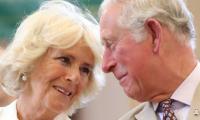The writer, a Chevening scholar, studied International Journalism at the University of Sussex.
The busting of India’s vast clandestine disinformation network by EU DisinfoLab earlier this year was a reminder, if any was needed, that Pakistan faces a relentless information challenge, one that has gradually evolved into warfare.
As part of this warfare, information is deployed strategically, twisted skillfully and shared methodically with ulterior motives to mislead, misinform and misinterpret. One overriding objective of the whole Indian campaign was to use the ‘independent, third-party’ sources for amplification as well as validation of the anti-Pakistan message with an express aim to paint the country in a bad light.
Information warfare falls broadly within the countries’ greater and renewed push for influence through the use of various sources. However, as the Indian example has shown, there is an expiry date on such propaganda as it is bound to be exposed sooner or later.
As the world mulls over ways and means to address the information challenge, a key strategy can be to change the terms of engagement through which a country is looked at, engaged with and commented upon.
There is now a greater realisation that our world is being shaped constantly by a competition of ideas in which the impact of a negative idea can only be diluted through the presentation of a positive idea.
Nations are thus increasingly investing in strengthening their capacity to generate ideas, brand them in the modern-day jargon and market them in a way so as to attract greater influence through persuasion rather than coercion.
The marketplace of ideas is, however, open to innovation, originality and intensity as the core principles of thought formation. The propensity to frame and present narratives in a reactive mode is giving way to proactive assertion of societal values, cultural norms, and foundational principles of civilization.
Before readers mistake the thesis at hand for a public relations strategy, a word of caution is in order here. The scramble for influence aimed at altering the perceptions of a country in a rapidly changing world represents an urge for rewriting the talking points through a deep reflection. It is not a cosmetic PR stunt but a dire introspection for a reset that changes the very parameters of interaction between the nations.
The first and foremost requirement for rebranding is to shed the fear factor and allow creative energy and imagination to become the basis for the expression of a more confident national identity. Fear stifles the thought process, undermines the urge for evolution and places nations in cocoons of self-doubt, confusion and identity crises.
One way of interaction with the outside world is through what scholars have termed as ‘public diplomacy’. The concept enunciated in the mid-1960s initially has come a long way. From governments employing various processes, tools, and policies to influence foreign publics and their perceptions, it has grown to encompass a wide array of institutions that operate independent of governments.
While governments still stay in the business, their role has become more facilitative in promoting the interaction and reach of their private sectors to engage their counterparts. Soft power is a public good that can be leveraged more optimally by a combination of actors.
The notion governing the science and practice of public diplomacy is to take your brand (country) to the foreign public and encourage them to engage with your product by making full disclosure of brand details with focus on aspects that are more appealing and culturally alluring to the target audience.
Lest one is tempted to confuse public diplomacy with propaganda or paid lobbying, it suffices to say that easy and unhindered access to information has made that nearly impossible. Fact-checking through a diversity of news/information sources has rendered propaganda less sustainable, leave alone believable.
For a country like Pakistan, that has wrestled with an image problem over the decades, the task of correcting perceptions is doubly challenging. First, it is being constantly subjected to a never-ending propaganda by its more powerful and globally entrenched neighbour.
Second, Pakistan is looked at disapprovingly because of the narratives generated by the Western media that seems to be obsessed with stereotypical profiling of the country within the negative framework of terrorism, human rights and nuclear weapons. For the past two decades in particular, a major chunk of Western media, exceptions apart, has shown an inability to see past the set talking points and spot the transformation the country has undergone in terms of its resilience to overcome challenges such as terrorism and the prospects of economic meltdowns.
Muddying the waters are the populist and Islamophobic winds in the Western world. These negative tendencies have sharpened the biases and strengthened the partisan outlooks. The rising sway of populism anchored in right-wing, nationalistic ideology has curtailed the space for sane voices and allowed rabble-rousers to drive a wedge between the Western societies and Muslim-majority countries. How the Western media has framed the conversation on Muslim asylum seekers running for their survival remains an instructive case in point.
It is, therefore, crucially important for countries like Pakistan to double down on their efforts to reach out to the world, knowing full well that the climate they have to operate in is shaped by the headwinds of negativity, ethnic, racial and religious profiling and ingrained disapproval.
The media is certainly an important target for public outreach efforts, for it is the key shaper of people’s perceptions and a primary source of their information. However, to confine one’s efforts to the media alone is to miss a larger picture. Having clarity about the nature of engagement and the identity of the actors remains crucial for this endeavour to have a shot at reasonable success.
It is critical to understand how media narratives are formed. Public diplomacy is much more than getting the media to project a positive picture of a country. What the media reports is shaped by what politicians say not just on questions of foreign policy but also on domestic issues. Their thoughts are inspired not just by what they read in the print media reports and watch on their TV screens but also what their think-tanks and research organizations publish.
So, it is a three-way dynamic process of communication in which think-tanks, politicians and executives and media feed off each other and in the process of this complex interaction, they shape public discourse that sets the parameters for a larger conversation.
An effort to change perceptions and influence the foreign public away from their typified and often borrowed opinions can be fruitful only when it is aimed at the right kind of audience with a message that has authenticity, predictability and credibility written all over it.
Unless countries become part of the mainstream conversations (for all the right reasons) in places where ideas are generated and widely disseminated, sporadic efforts may not succeed.
In my next article, I will focus on how Pakistan can demonstrate bold and fresh thinking and leverage its core strengths to change the talking points about itself in an effort to reset the rules of engagement with the influential countries.
Email: amanatchpk@gmail.com
Twitter: @Amanat222
People stand in line up as election officials check their ballot papers during voting general election at a polling...
Women show their voter identity cards as they stand in a queue before casting their votes in Agartala. — PTIThe 18th...
Former prime minister Imran Khan. — Instagram/ imrankhan.ptiAn old saying has it that “when you dance with the...
Kashmiris in Indian illegally occupied Kashmir protesting against the Indian occupation as the forces of India looked...
A representational image showing residents walking at a wholesale market in Karachi. — AFP/FileOnce again there is...
A representational image showing late Pakistani human rights activist and Supreme Court lawyer Asma Jahangir. —...







